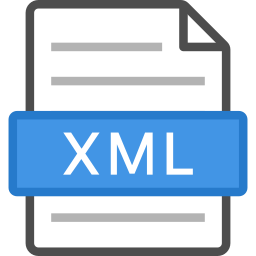PowerShell offers several ways to work with XML, making it a powerful tool for managing configurations, parsing data, and more. In this article, we’ll explore how you can use PowerShell to create, read, and manipulate XML.

Understanding XML
XML (eXtensible Markup Language) is a common data format used to store and transport data. It’s human-readable and widely supported, making it an ideal choice for many applications.
A basic XML document might look something like this:
<?xml version="1.0"?>
<employees>
<employee>
<name>John Doe</name>
<position>Manager</position>
</employee>
<employee>
<name>Jane Smith</name>
<position>Developer</position>
</employee>
</employees>Reading XML with PowerShell
PowerShell makes it easy to read XML documents. Use the Get-Content cmdlet to read the XML file, and then cast it to [xml]:
# Read an XML file
$xml = [xml](Get-Content "C:\path\to\your\file.xml")
# Access elements
$xml.employees.employee | ForEach-Object {
Write-Output ("Name: " + $_.name)
Write-Output ("Position: " + $_.position)
}Creating XML documents
You can also create XML documents with PowerShell. You can do this by creating an XmlDocument object and using its methods to add elements:
# Create an XmlDocument
$xml = New-Object System.Xml.XmlDocument
# Create and append the root element
$employees = $xml.CreateElement("employees")
$xml.AppendChild($employees)
# Create and append an employee element
$employee = $xml.CreateElement("employee")
$employees.AppendChild($employee)
# Create, set the value of, and append a name element
$name = $xml.CreateElement("name")
$name.InnerText = "John Doe"
$employee.AppendChild($name)
# Save the XML document
$xml.OuterXml | Set-Content "C:\path\to\your\file.xml"Modifying XML documents
Modifying an XML document is as simple as reading it, making changes, and then saving it:
# Read an XML file
$xml = [xml](Get-Content "C:\path\to\your\file.xml")
# Change the name of the first employee
$xml.employees.employee[0].name = "New Name"
# Save the XML document
$xml.OuterXml | Set-Content "C:\path\to\your\file.xml"Best practices
Here are some best practices when working with XML and PowerShell:
- Error Handling: Always include error handling when working with files or when parsing XML.
- Indenting XML: PowerShell doesn’t indent XML by default. If you want indented XML, use the
Savemethod of theXmlDocumentobject. - XML vs. JSON: While XML is powerful, JSON may be easier to work with in some cases. PowerShell also supports JSON.
Conclusion
Understanding how to interact with XML using PowerShell can open up a variety of possibilities. It can make your scripts more versatile, allowing them to interact with XML-based APIs, configuration files, and more.

Leave a Reply